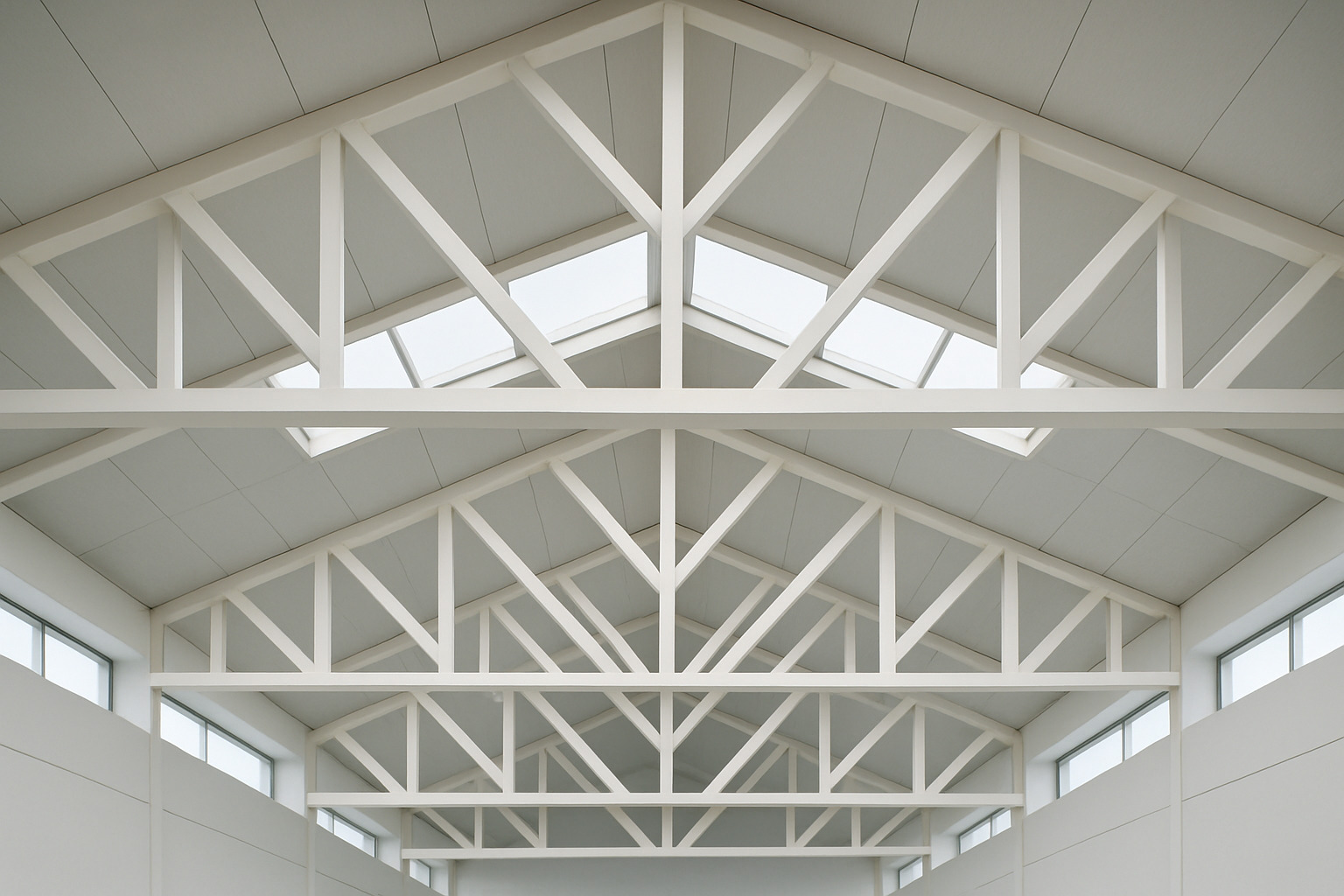When it comes to modern roof construction, ensuring structural integrity and durability is paramount. One innovative solution that has gained traction in recent years is Chevron bracing for roof trusses. This technique not only strengthens the roof structure but also offers efficient load distribution, making it an ideal choice for a variety of building projects. In this article, we will explore the concept of chevron bracing, its benefits, applications, and how it fits into the design of modern roof trusses.
Chevron Bracing Roof Trusses Span Tables
Understanding the span capacity of roof trusses equipped with chevron bracing is crucial for architects, builders, and engineers. Span tables provide essential data on the maximum allowable lengths and spacing for different truss configurations under various load conditions.
For those interested in detailed span tables, HouseBuild UK offers comprehensive resources that help you determine the appropriate truss size and bracing for your building project. You can access these resources here: HouseBuild UK Trusses Span Tables.
What is Chevron Bracing in Roof Trusses?
Chevron bracing is a diagonal bracing pattern arranged in a “V” or inverted “V” shape, resembling the pattern of military chevrons. This form of bracing is implemented within roof trusses to increase their lateral stability and resistance to buckling or twisting under load.
Traditionally, roof trusses rely on vertical and horizontal members along with diagonal braces to maintain shape and carry loads. Chevron bracing enhances this system by introducing additional diagonal elements that effectively transfer loads and stiffen the structure. This reinforcement is particularly beneficial for longer spans or where roofs must resist significant wind or snow loads.
Advantages of Chevron Bracing Roof Trusses
1. Enhanced Structural Stability
Chevron bracing offers superior lateral stiffness to roof trusses, preventing unwanted deflection or movement. This results in a more robust structure that can withstand dynamic forces like wind gusts or seismic activity, crucial in modern building standards.
2. Optimised Load Distribution
The “V”-shaped braces distribute forces more evenly across the truss members, reducing stress concentrations. This helps in maintaining the integrity of individual truss components, thereby prolonging the roof’s lifespan.
3. Suitable for Long Spans
Chevron bracing allows for longer truss spans without compromising safety or performance. This makes it ideal for modern architectural designs that require large open spaces with minimal internal supports.
4. Cost-Effective Construction
By improving the load-carrying efficiency, chevron bracing can reduce the amount of timber or steel required, leading to cost savings. It also simplifies construction by providing a clear and repeatable bracing pattern.
Applications of Chevron Bracing Roof Trusses
Chevron bracing roof trusses are versatile and can be applied in a wide range of building types:
-
Residential Homes: Ideal for large-span roofs in modern homes where open-plan living spaces demand fewer internal walls.
-
Commercial Buildings: Warehouses, retail outlets, and factories benefit from the enhanced strength and long-span capabilities.
-
Public and Recreational Facilities: Gymnasiums, halls, and auditoriums often require expansive roof areas with minimal columns.
-
Agricultural Structures: Barns and storage facilities use chevron braced trusses for efficient load handling and durability.
Designing with Chevron Bracing Roof Trusses
Incorporating chevron bracing into roof truss design requires careful consideration of load paths, connection details, and material properties. Engineers must ensure that the bracing is adequately anchored to truss members and that all joints are capable of handling the induced forces.
Modern software tools and span tables, such as those provided by HouseBuild UK, facilitate precise design and specification of chevron braced roof trusses. These resources help builders comply with UK building regulations and industry standards while optimising material use.
Installation and Maintenance
Proper installation is key to the success of chevron bracing in roof trusses. Builders must follow detailed construction drawings and adhere to recommended fastening techniques to guarantee stability.
Routine maintenance involves inspecting connections for any signs of loosening or damage and ensuring that environmental factors such as moisture do not compromise timber quality. With proper care, chevron braced trusses provide a durable and low-maintenance roofing solution.
Conclusion
Chevron bracing roof trusses represent a modern and efficient approach to enhancing the strength and stability of roof structures. By adopting this bracing technique, builders and engineers can achieve longer spans, improved load distribution, and increased resistance to lateral forces — all while optimising construction costs.
For anyone involved in roof construction or renovation, understanding the benefits and applications of chevron bracing roof trusses is essential. Leveraging span tables and expert design guidelines, such as those available through HouseBuild UK, ensures your roofing project is safe, durable, and compliant with modern building standards.
If you’re planning a new build or refurbishing an existing roof, consider the advantages of chevron bracing and how it can contribute to a stronger, more resilient structure.
